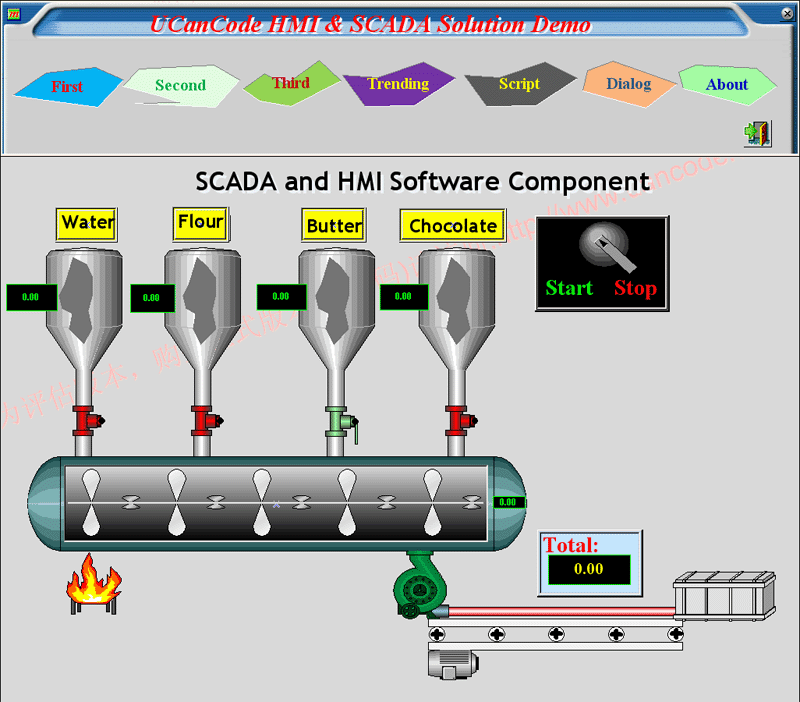PLC, DCS, SCADA, HMI – What are the differences?
You’ve landed on this blogpost, so you probably know what the definitions are,
but over the past decade the functionality of different control systems has been
merging. Therefore it is important to explain how we interpretent the terms in
this blogpost:
-
PLC – Programmable Logic Controller
A PLC can handle the binary input and
output of the logic statement which are stored in its’s memory. In fact, a
PLC is a small DCS. The status of the PLC and process
can be graphically visualized in a HMI or SCADA. A operator
can also give commands to the PLC and view the output in a HMI
or SCADA.
-
DCS – Distributed Control System
A DCS is a automated control system
that is distributed throughout a machine to provide instructions to
different parts of the machine. Each section / part of a machine has its own
computer that controls and manages the operation.
-
SCADA – Supervisory Control And Data Acquisition
A SCADA system is a application or
system utilized for real-time collection of data from one or more remote
locations. The collected information is utilized to monitor and manage
ongoing processes. SCADA is quite a lot like a HMI, but
SCADA is used for displaying large scale process data and is used in
control rooms, far away from the machine itself.
-
HMI – Human Machine Interfaces
A HMI is just like a SCADA a
monitoring device which displays the status of the machine. The main
difference is that SCADA is a remote monitoring system, where as
HMI is local to machine. A HMI for example, would be placed on
the control panle near a part of a machine, where as SCADA would be
set up in a control room, far away from the machine itself.
Okay, so now we understand that HMI and SCADA are morelikely just
interfaces. However, the question ‘What is the difference between a DCS
and a PLC?’ still remains. The answer isn’t simple as a PLC/HMI
combination can do a lot of the same things a DCS does.
PLC vs DCS
When using a PLC, 99% of the times you will need a HMI, which
displays a graphical representation of a process or machine so operators can
monitor and control the process. It is possible to use a PLC without a
HMI, but when a process or machine will be regularly monitored and controled
by operators, a HMI is a must. A DCS typically covers an entire
proces and is capable of covering an entire plant. This means a DCS is a
lot more expensive.
When deciding to choose for a PLC setup or a DCS, you shouldn’t
just look to the dollar signs. The question is: do you want to pay now or pay
later. That sounds a bit sour, but you should realize that if your setup needs a
DCS (or in the future), but you choose for a PLC-setup, you are
going to pay more down the road in engineering time.
1.
Industrial control SCADA &HMI Solution--
with source codes!

2.
Visualization & HMI Solution-- with source codes!
|
|




